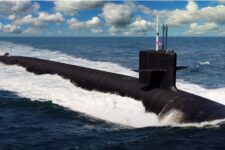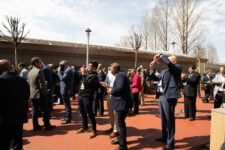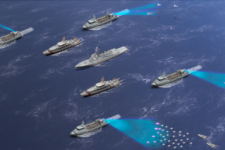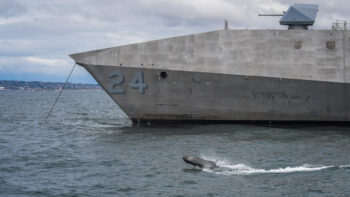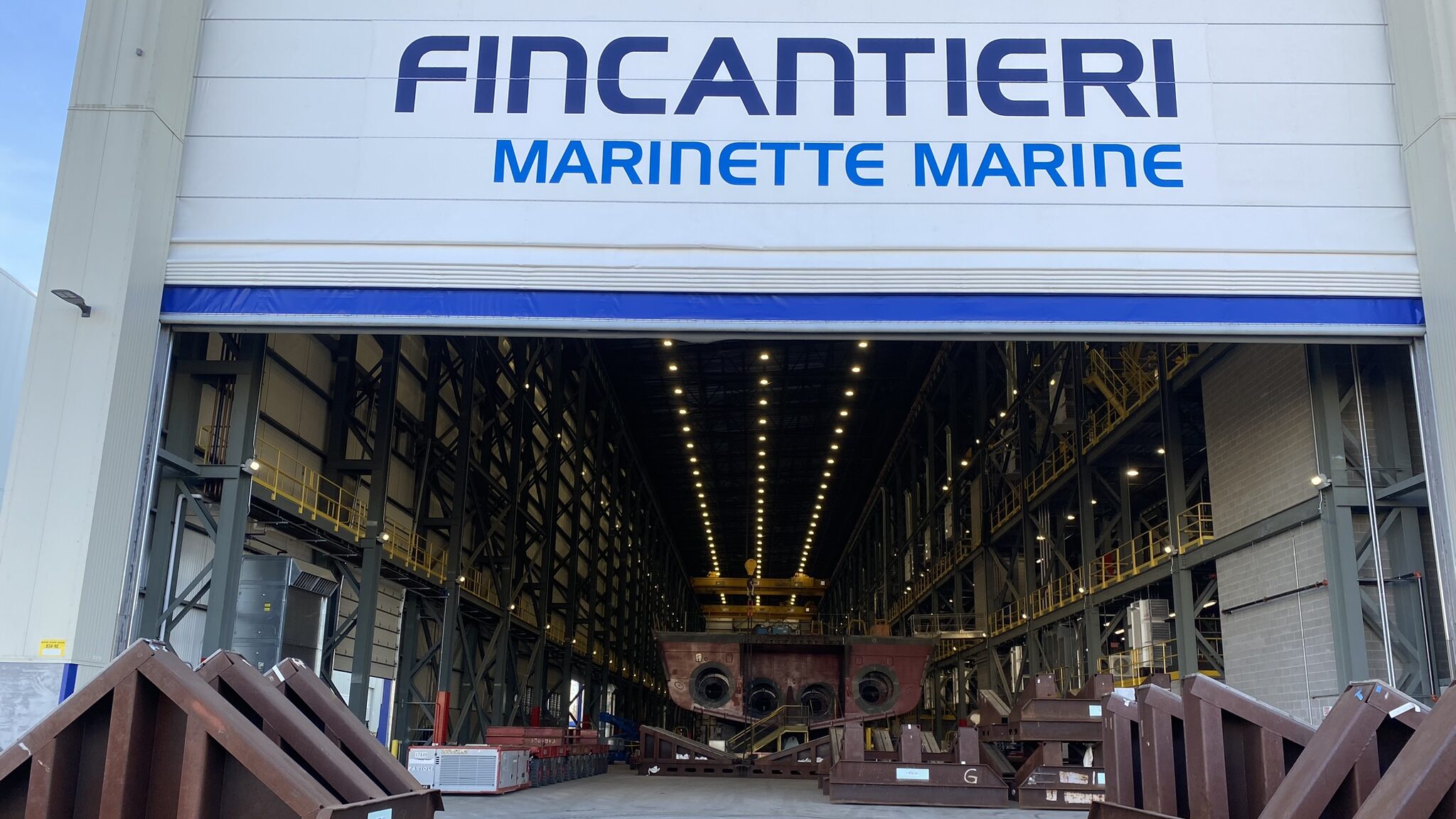
One of the bays of “Building 34” at Fincantieri Marinette Marine. (Justin Katz/Breaking Defense)
MARINETTE, Wisc. — Right now, the single 4,000-ton Multi-Mission Surface Combatant vessel only fills up a fraction of the space in cavernous “Building 34” of Fincantieri Marinette Marine’s Wisconsin-based shipyard. But the company is finishing up $300 million in shipyard renovations, hoping it’ll pay off if and when 34 is just about full and hosting two new 7,000-ton frigates every year for the US Navy.
There’s never any guarantees when it comes to the US Navy’s shipbuilding cadences, which could always shift with political headwinds. Further, the Constellation-class program is under intense scrutiny by lawmakers who are weary of the years of delays and cost overruns incurred by the frigate’s predecessor, the Littoral Combat Ship.
But Mark Vandroff, the shipyard’s CEO, said he is confident the first ship in the class, which is historically the most likely to be problematic for both industry and the Navy, will arrive on time and set an example.
“We are doing everything we can to deliver the [first] ship in 2026 and I’m on track to deliver the ship in 2026,” Mark Vandroff, the shipyard’s CEO, said of the first-in-class ship Constellation (FFG-62) that was already awarded to Fincantieri. “I would have liked more time and buffer in case things [go] wrong, but we still have an executable plan to get Constellation delivered in 2026.”
Vandroff, a retired Navy captain and former policy director at the National Security Council, told reporters last week during a tour of the campus that Fincantieri’s $300 million investment in optimizing its facilities to deliver the new frigate is nearing completion. At the shipyard’s maximum capacity, the workforce could juggle six ships between raw materials awaiting assembly, two ships being constructed inside Building 34 and two additional vessels sitting on the waterfront.
RELATED: Fincantieri bosses on Constellation class, Ukraine and unmanned systems
Even by shipbuilding standards, the investment was significant and included four substantial projects throughout the property, but it remains to be seen whether the Navy fully capitalizes on Fincantieri’s renovations. The fights surrounding the Pentagon’s shipbuilding budget this year are fierce, from the increasing pressures that AUKUS brings, to the lack of amphibious ships the Marine Corps insists are integral to its mission.
Furthermore, both Fincantieri, as well as its chief competitors, are closely watching the Navy for signs of if, and when, it might award a contract to a second shipbuilder to begin building Constellation-class frigates. The program of record currently forecasts a fleet of 20 frigates when all is said and done.
The subject came up on Tuesday during a Senate hearing with the service’s top brass. Navy Secretary Carlos Del Toro said the decision to select a second yard has yet to be made, adding that the service expects to receive a completed technical data package — the blueprints that would allow another company to build Fincantieri’s ship — by the end of this year. Once that information is in hand, the Navy can decide whether a second builder is plausible and necessary.
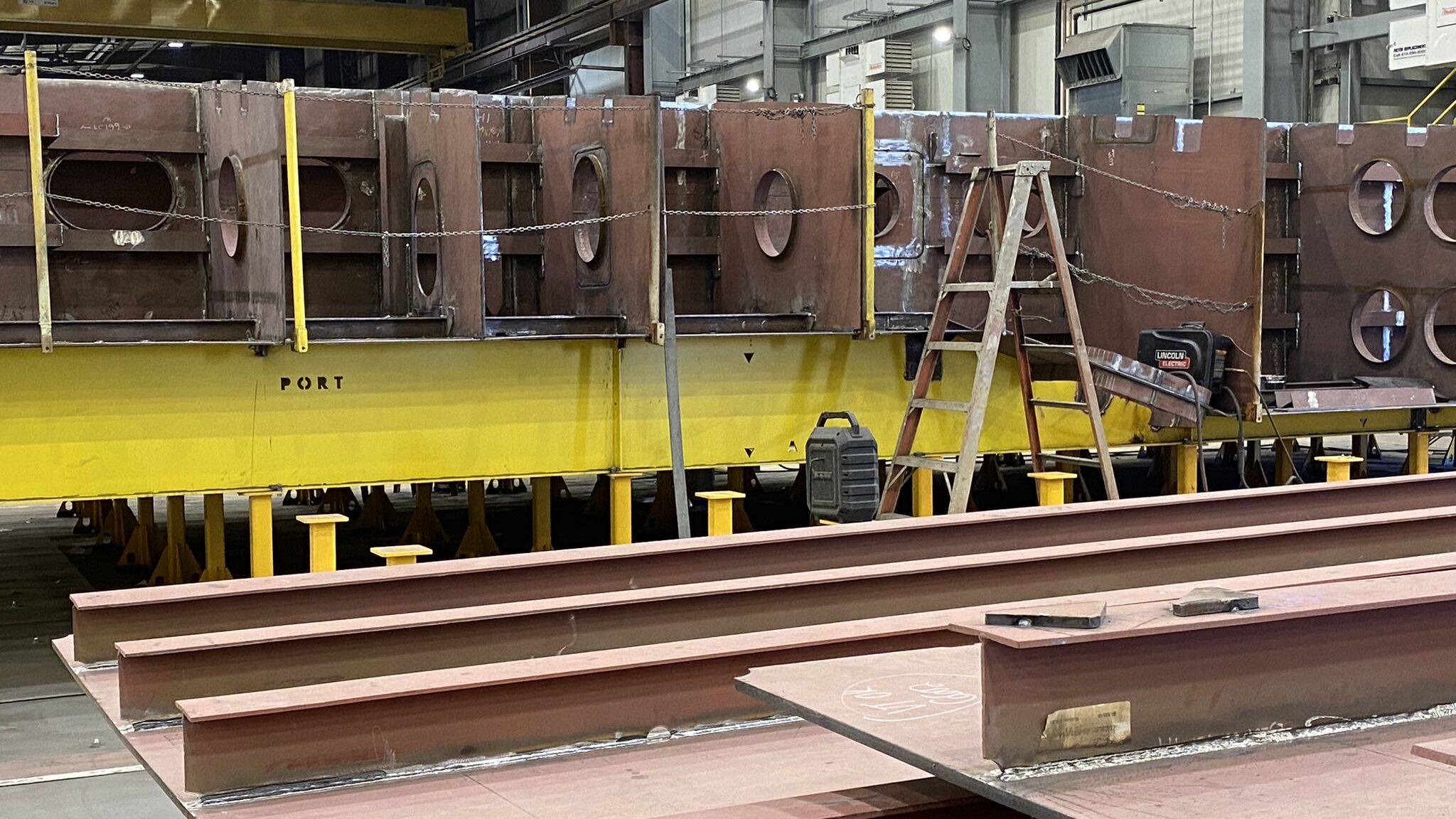
The first pieces of the USS Constellation (FFG-62) begin to take shape at Fincantieri Marinette Marine. (Justin Katz/Breaking Defense)
For Vandroff’s part, he was straight forward about the maximum capacity of his shipyard.
“I’m a shipbuilder. So, I would certainly rather build two than one and a half,” he said when asked about the Navy’s current cadence for the Constellation-class program, a pattern that alternates between buying either one or two ships per year. “So, if the Navy sometime decides that it wants three or four of these a year, they will need to find a second yard… But for one and a half to two a year, we’ve got the Navy covered.”
The cadence of the frigate program is crucial to Fincantieri Marinette Marine because the shipyard is effectively clearing its plate to build the Constellation class. The company just this Saturday celebrated the successful launch of its last Freedom-class Littoral Combat Ship. Meanwhile, two of only four Multi-Mission Surface Combatants, slated to be sold to the Kingdom of Saudi Arabia, are already taking shape. Once those programs end, the new frigate will be the shipyard’s focus.
One Shipyard, 4 Projects, $300 Million
Fincantieri’s investment into its shipyard can be split into four categories: Building 34, a “ship lift,” a panel line and the refurbishing of an older building to be equipped for blasting and painting.
Building 34 has become the new centerpiece of the shipyard, boasting two massive bays that can hold one frigate a piece. During the tour with reporters, one bay was empty while the other held that Multi-Mission Surface Combatant. It’s a Lockheed Martin-designed that ship, and Fincantieri is a sub-contractor responsible for assembling it. Vandroff said being able to host an MMSC inside Building 34 has been helpful because it provides an opportunity to break in the new workspace.
The second major investment, the “ship lift,” will be completed this year. The lift, as its name implies, is used to move brand new vessels from the land to the water for the first time. The final Freedom-class LCS launched on Saturday used the traditional method of effectively sliding it down a ramp and allowing it to splash into the Menominee River. The upside to this type of launch is that it’s inexpensive and a relatively simple process for the workforce.
The downside, as Vandroff put it, is that it’s “violent.” The yard is limited in what work can be done on a ship pre-launch because the dramatic splash could damage certain components if they are installed while the ship is still ashore. The ship lift, although a costly investment, ensures the new frigates will receive a gentler entry into the water.
In the days after Vandroff spoke to reporters, LCS-31 damaged a nearby tugboat during its entry into the water, according to a report by Cleveland.com. A video shared on social media shows the ship sliding down the ramp and sending a large wave onto the crew of the smaller vessel. A statement from a Navy spokesperson indicated there was a miscommunication between the Navy and the shipbuilders, causing the tugboat to be unnecessarily close to the ramp, Cleveland.com reported. The incident is under investigation.
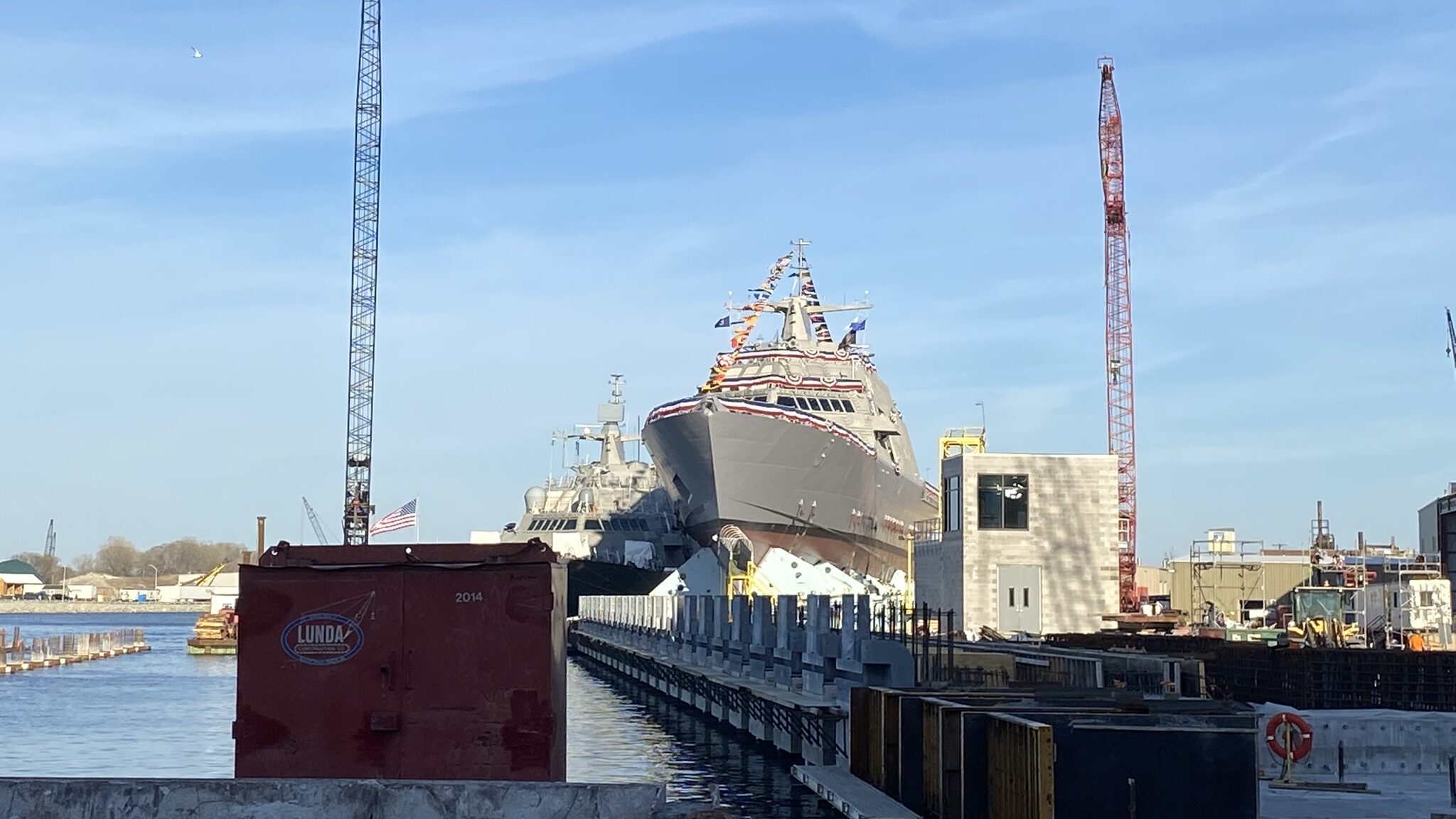
The final Freedom-class Littoral Combat Ship (right) sits on a ramp just days before she is launched into the water. (Justin Katz/Breaking Defense)
The third project is a panel line. The oversized conveyor belt-like machine moves the ship’s massive steel panels into position where another machine or a person can weld the material together from both sides. This process would have taken much more time and manpower without the panel line because workers would use a crane to position panels correctly for each individual weld.
“The [new] panel line now at any one time even when you’re up and fully running during a shift will have a couple of operators and maybe one or two [welders],” Vandroff said over the hum of machinery elsewhere in the building. “The old panel line was 20 people.”
The fourth and final project, which Vandroff characterized as the smallest on the list, was gutting and refurbishing an old building to create additional capacity for blasting and painting. (Blasting refers to the process of roughing up fresh steel panels so that paint adheres to them.)
Of the four projects, Building 34 and the panel line are completed, the ship lift will wrap up this year and the painting space does not need to be finished until next year, Vandroff said.
As Fincantieri finishes its final renovations and clears its plate of other projects, back in Washington, DC, the stage is already being set for lawmakers, eager to see more shipbuilding contracts disbursed at home, to boost the Navy’s frigate procurement rates.
During the Tuesday hearing with lawmakers, Chief of Naval Operations Adm. Michael Gilday was asked by Sen. Roger Wicker, R-Miss., “how important would it be” for the Navy to increase frigate production up to four frigates per year.
“I think very important based on the comments of both you and the chairman [Sen. Jack Reed, D-R.I.] at the opening of the committee,” the admiral responded. “If we could get to a second shipyard and two a year from each shipyard [as well as] two to three destroyers a year, we’d be in a much better place.”









